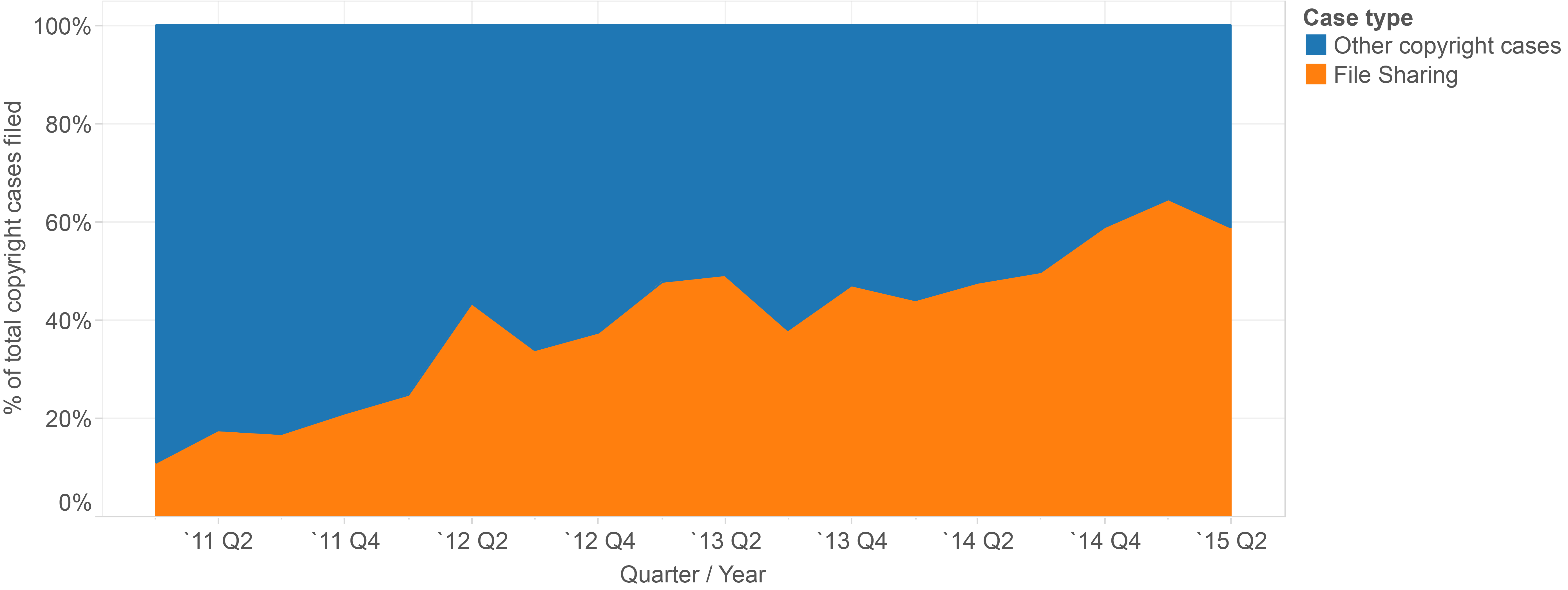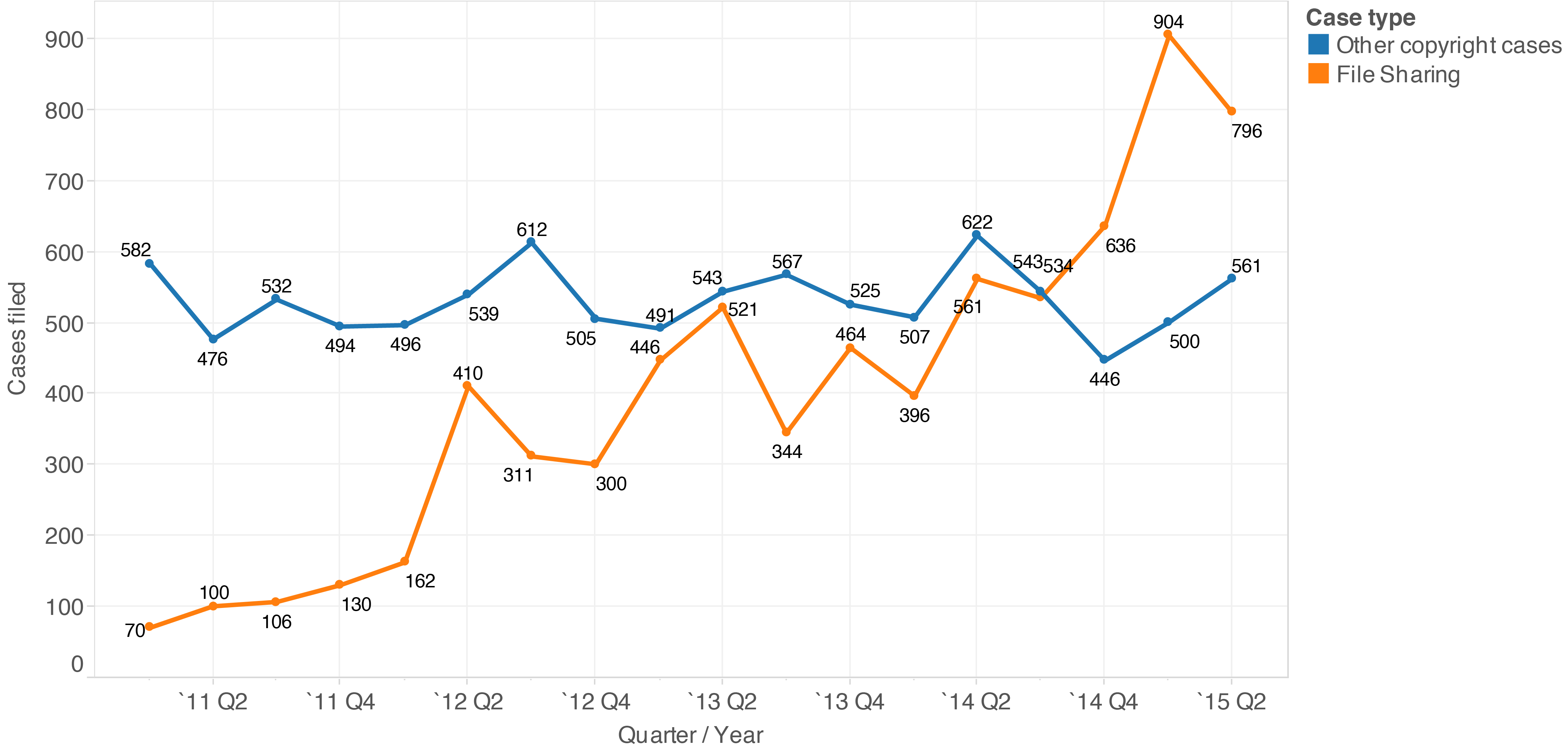Lex Machina is pleased to announce the publication today of the first-ever comprehensive study of U.S. copyright litigation.
The Lex Machina Copyright Litigation Report breaks down the thousands of copyright cases filed in the last 5 years to showcase how this data can be used to inform litigation strategy: from detailed analysis of different judicial districts useful to forum planning, to timing data on trial and injunctions that can drastically improve budgeting, as well as top parties and firms for firm marketing and outside counsel selection.
This post provides a sneak-peek at one of the most significant findings of the report: the rise of mass litigation against Doe defendants for file sharing.
As anyone who has ever done legal research knows, a good search eliminates noise leaving one to focus on the relevant portion of the results. When it comes to copyright litigation, Lex Machina’s platform makes this easy: our automated processes separate copyright litigation by identifying anonymous internet file sharing allegations and tagging those cases, allowing users to easily include or exclude them with a single click.
As the figures below show, file sharing cases comprise a significant and increasing proportion of the copyright cases filed over the last 4 years.
Figure 1: Copyright and File Sharing Cases
Figure 2: Copyright and File Sharing Cases (as percentage of total copyright case volume)

To learn more about file sharing cases and how they impact copyright litigation, click here to register to receive a copy of the report.
